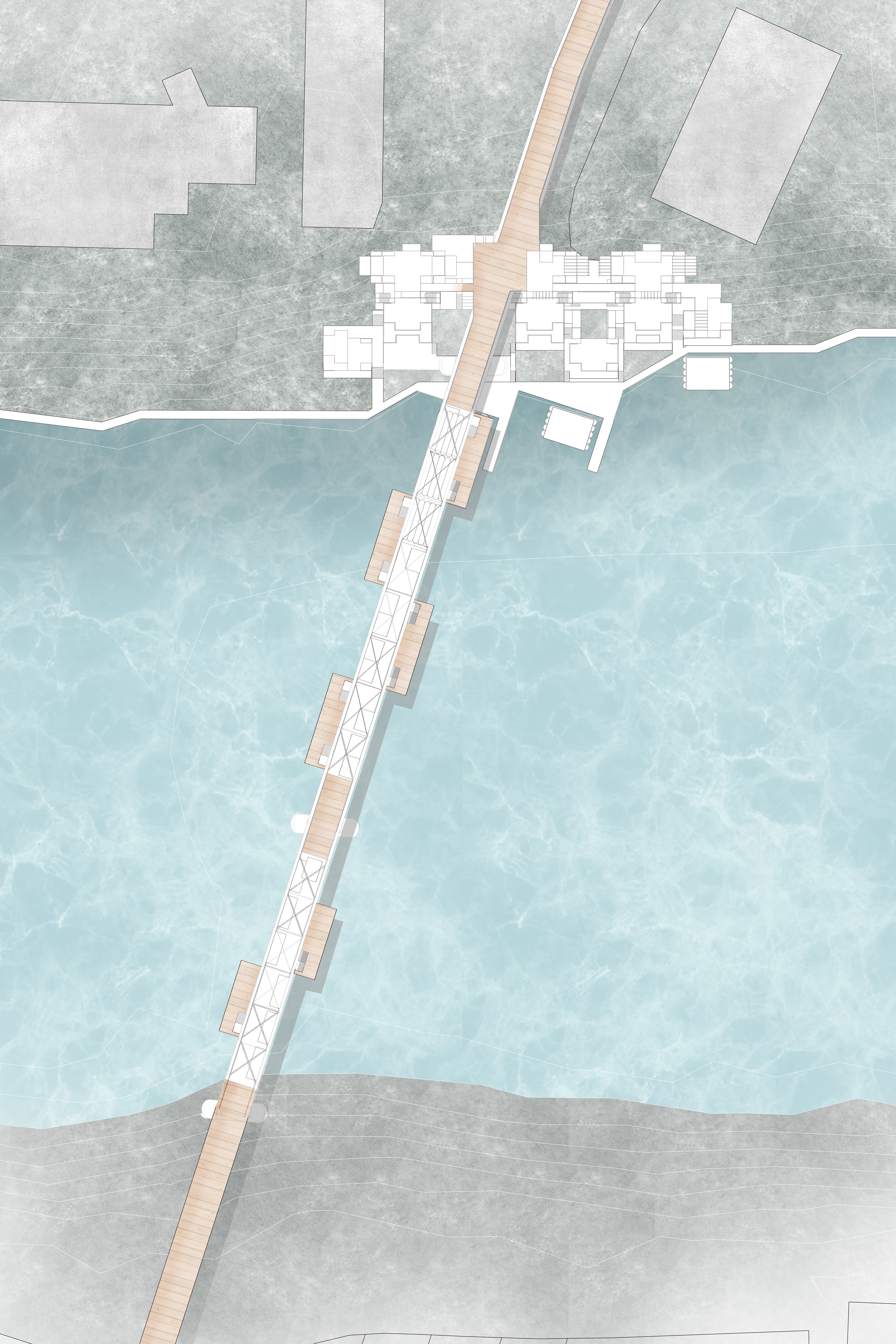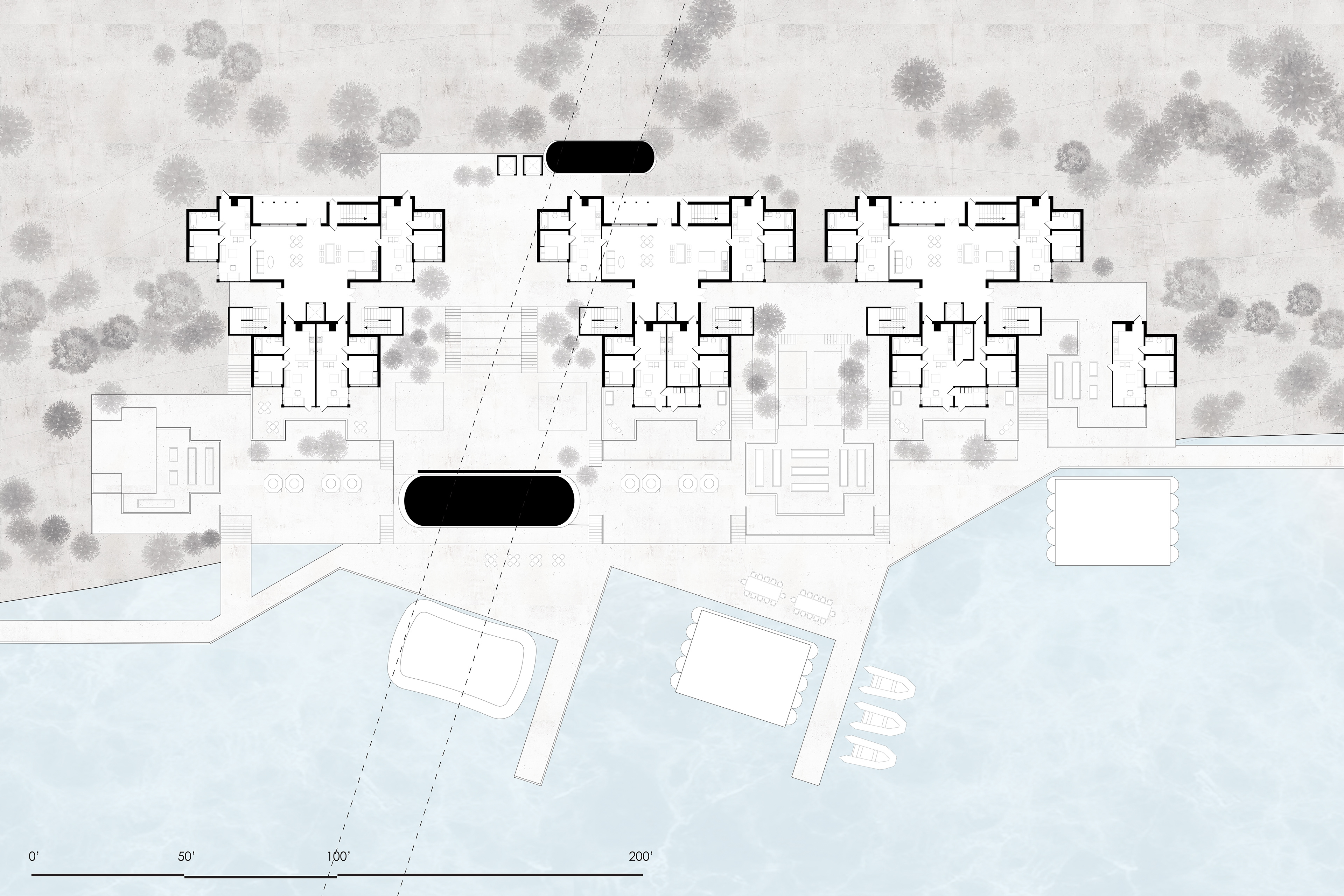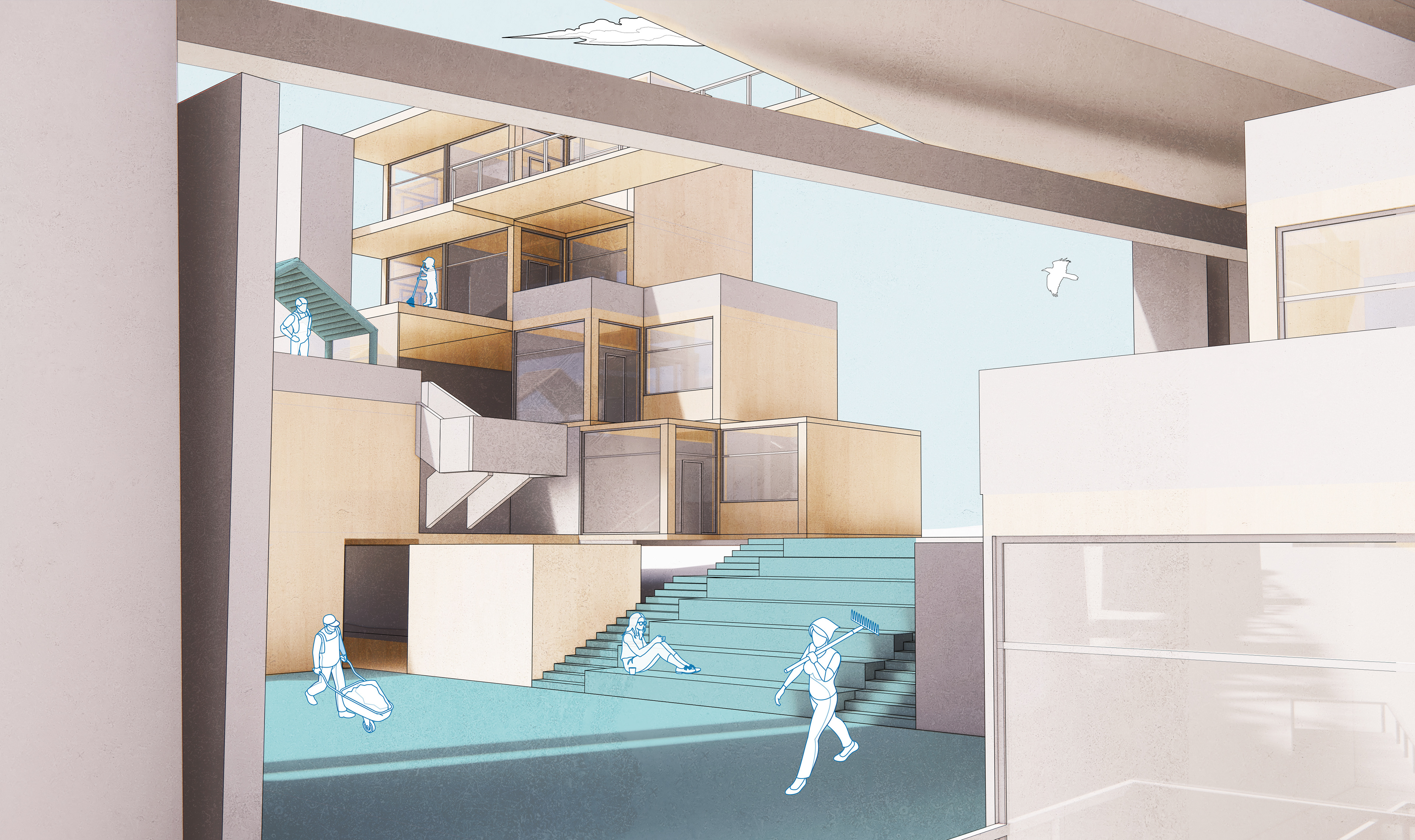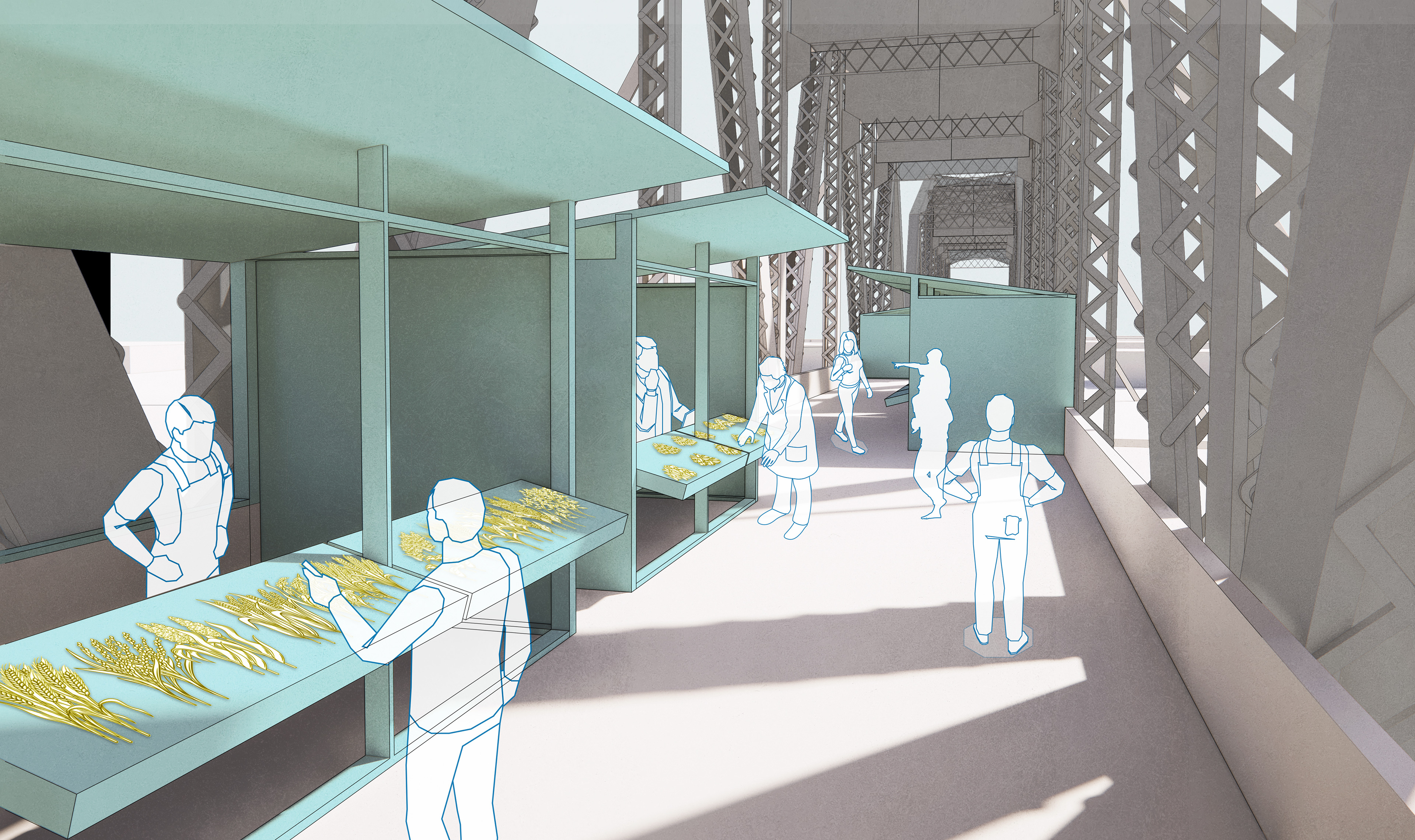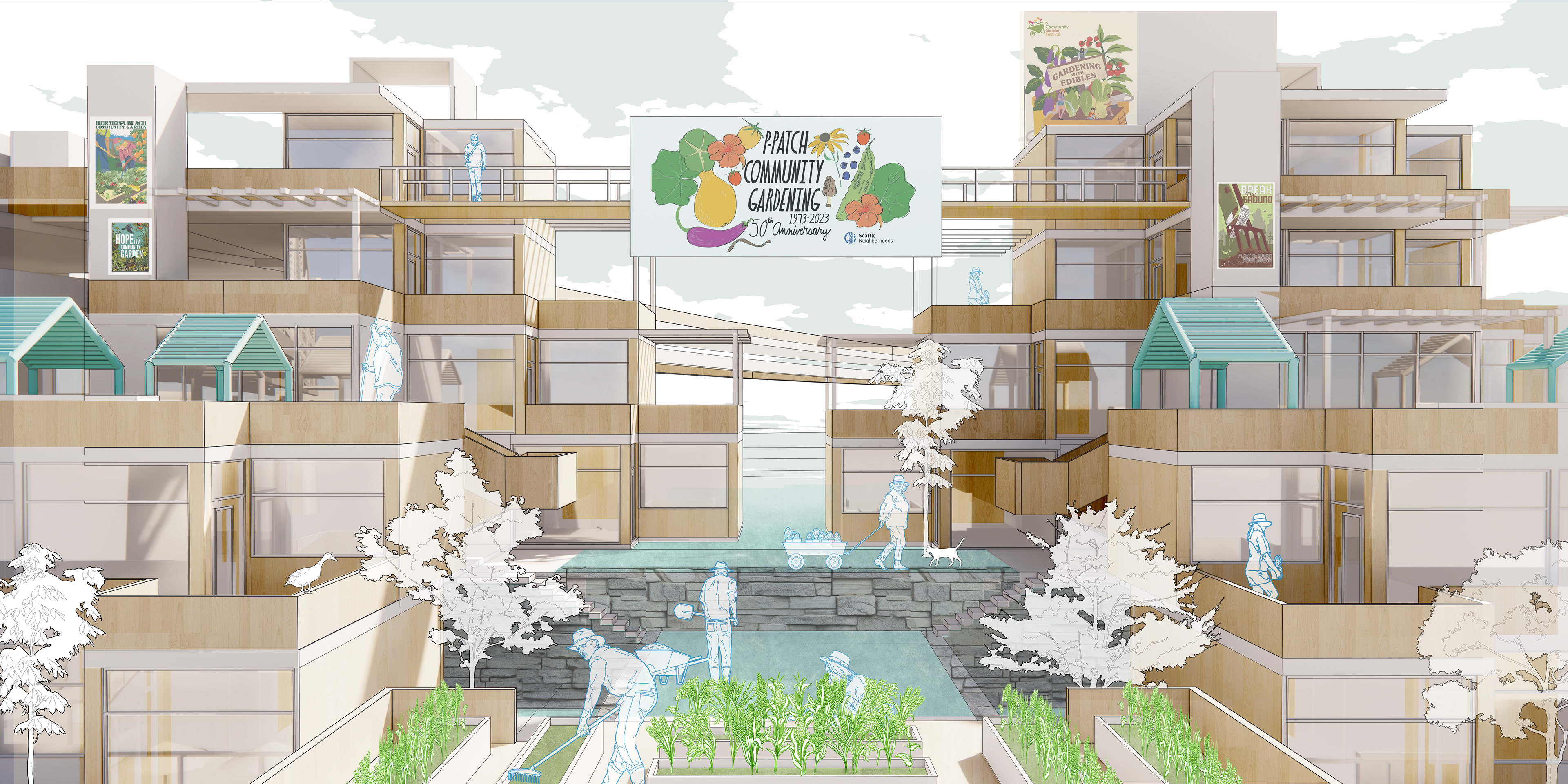The Steel Necklace is a group project involving three architectural complexes that utilize different architectural interventions to address the cultural, social, and ecological issues of Pittsburgh. Our overarching goal is to create community engagement at different scales, from neighborhood to regional to city, and empower less-privileged and marginalized groups in Pittsburgh. The three sub-projects include a worker’s activism hub in the Strip District, a community center in the Hill District, and a co-living affordable housing complex with agricultural elements in Herr’s Island.
THE STRIP DISTRICT: WORKER'S ACTIVISM HUB





The Strip District site was chosen for its proximity to downtown Pittsburgh and its history as an industrial zone, allowing it to be a generator and catalyst for labor movements. It is designed based on the existing old warehouse’s frame and divided into private and public spaces with flexible components such as mobile walls and accordion roof. Assembly space, performance theater, gallery, public kitchen, workshop, art studio, print shop, and more are included to allow unionizing workers, allies, labor activists, and workers to feel a sense of community with working-class people. Temporary housing also facilitates striking workers for organizing events.
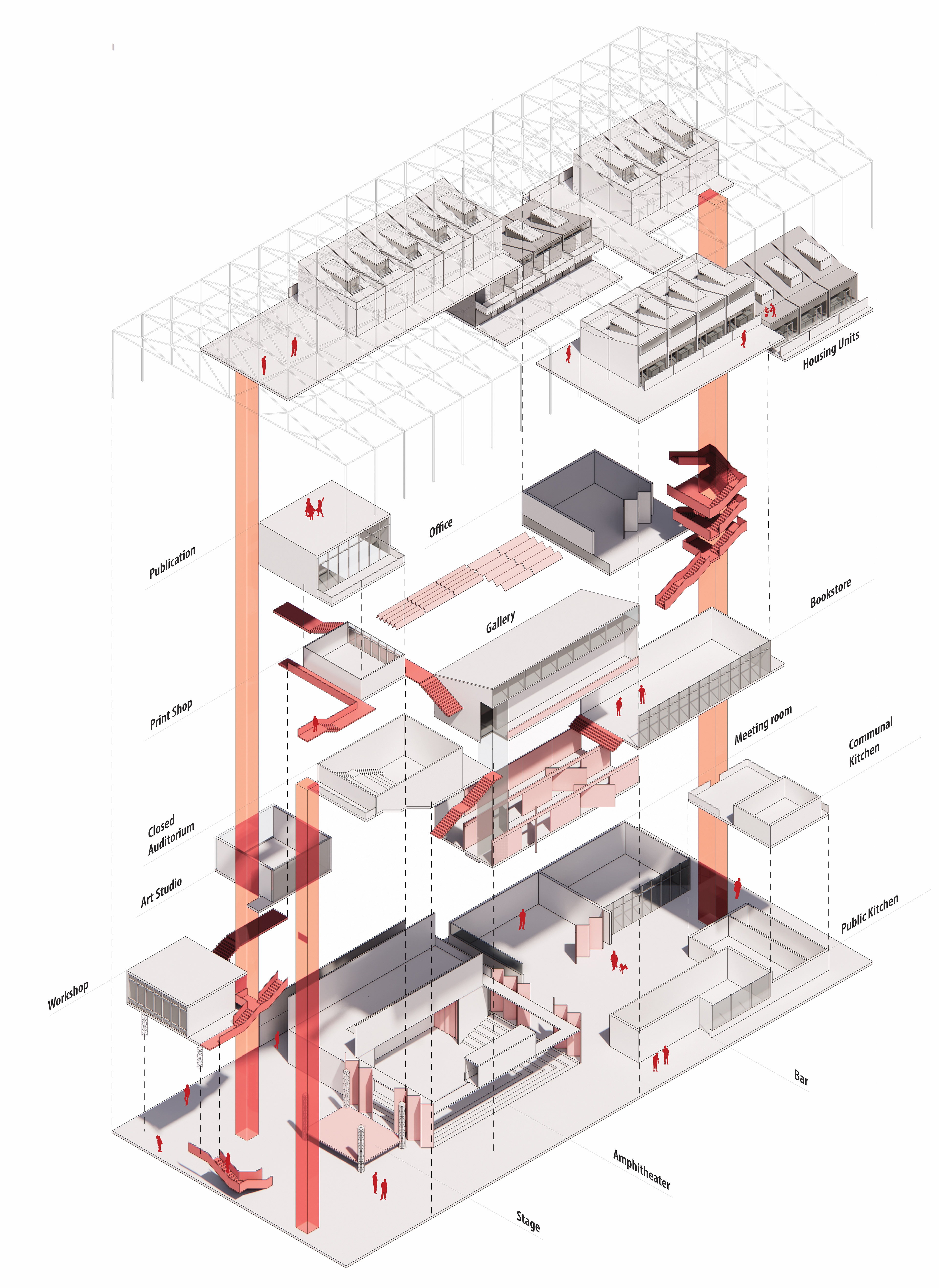
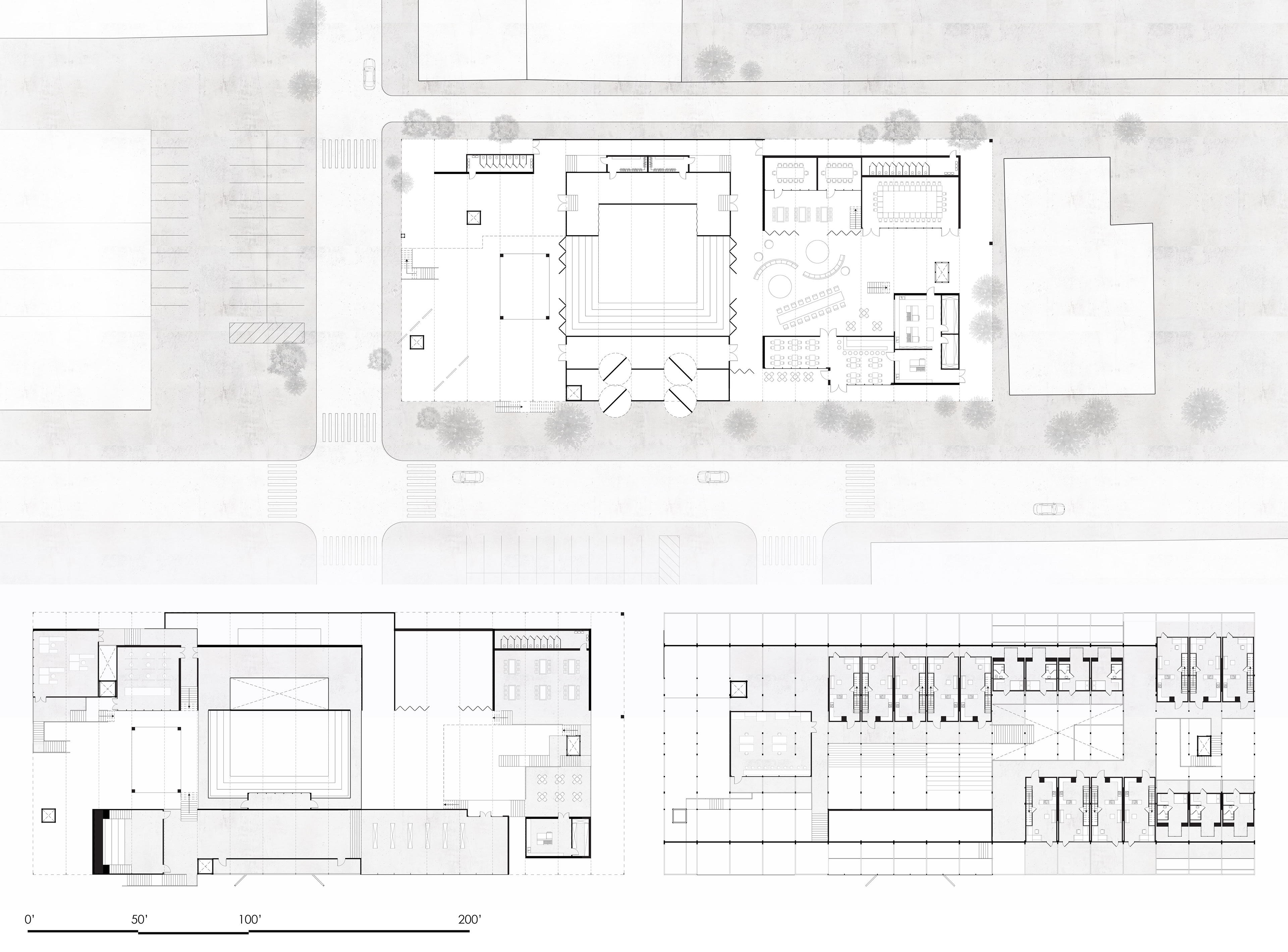
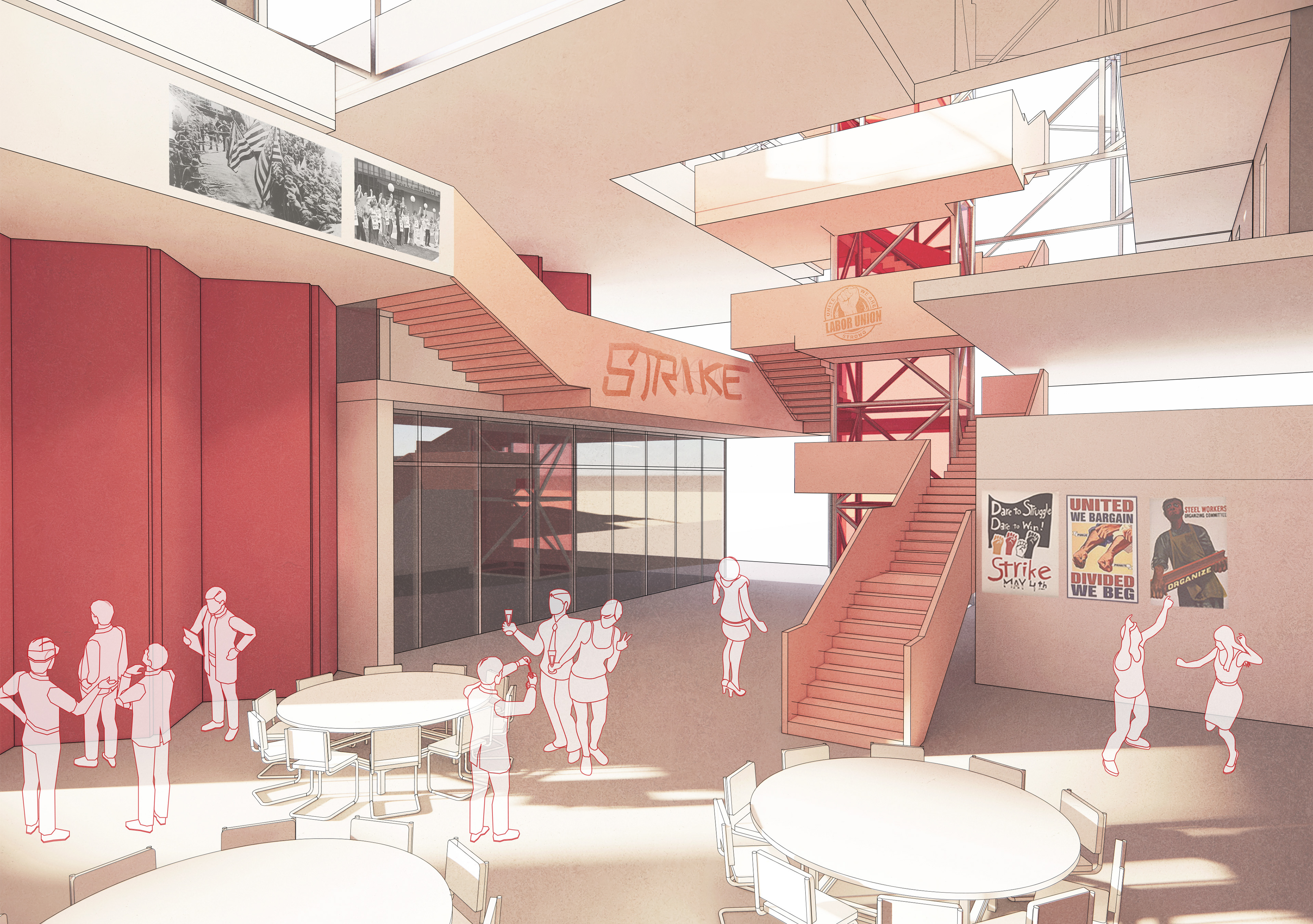
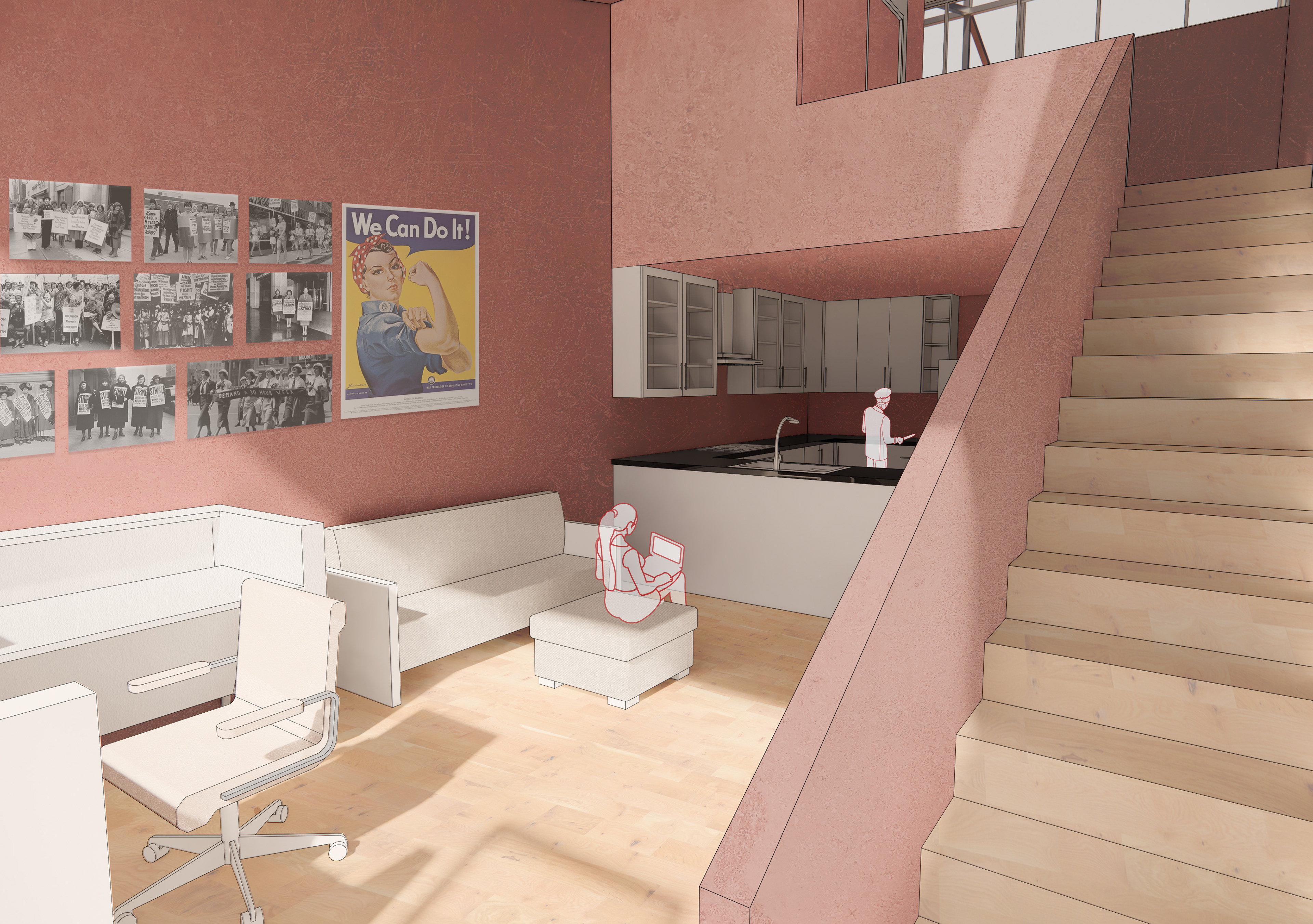

THE HILL DISTRICT: COMMUNITY CENTER
The Hill District community center was designed with the goal of creating a catered, multi-use space for the neighborhood, run by the people of the community. The design expands from a node and connects to the community, both physically and figuratively. The project is built on a physical slope based on a grid system. Wide terrace stairs are adopted as the main circulation gesture across the site. Starting from the lowest point of the project, the center includes a library, a daycare, a clinic, and an urban kitchen that makes and distributes food in the city. Ascending to the second floor, the library, office, and multi-use spaces connect the occupiable roofs that function as dining, a basketball court, and a small skate park. The connection to the community is physically represented by the scaffolding system that surrounds the building and provides flexible connections between spaces.
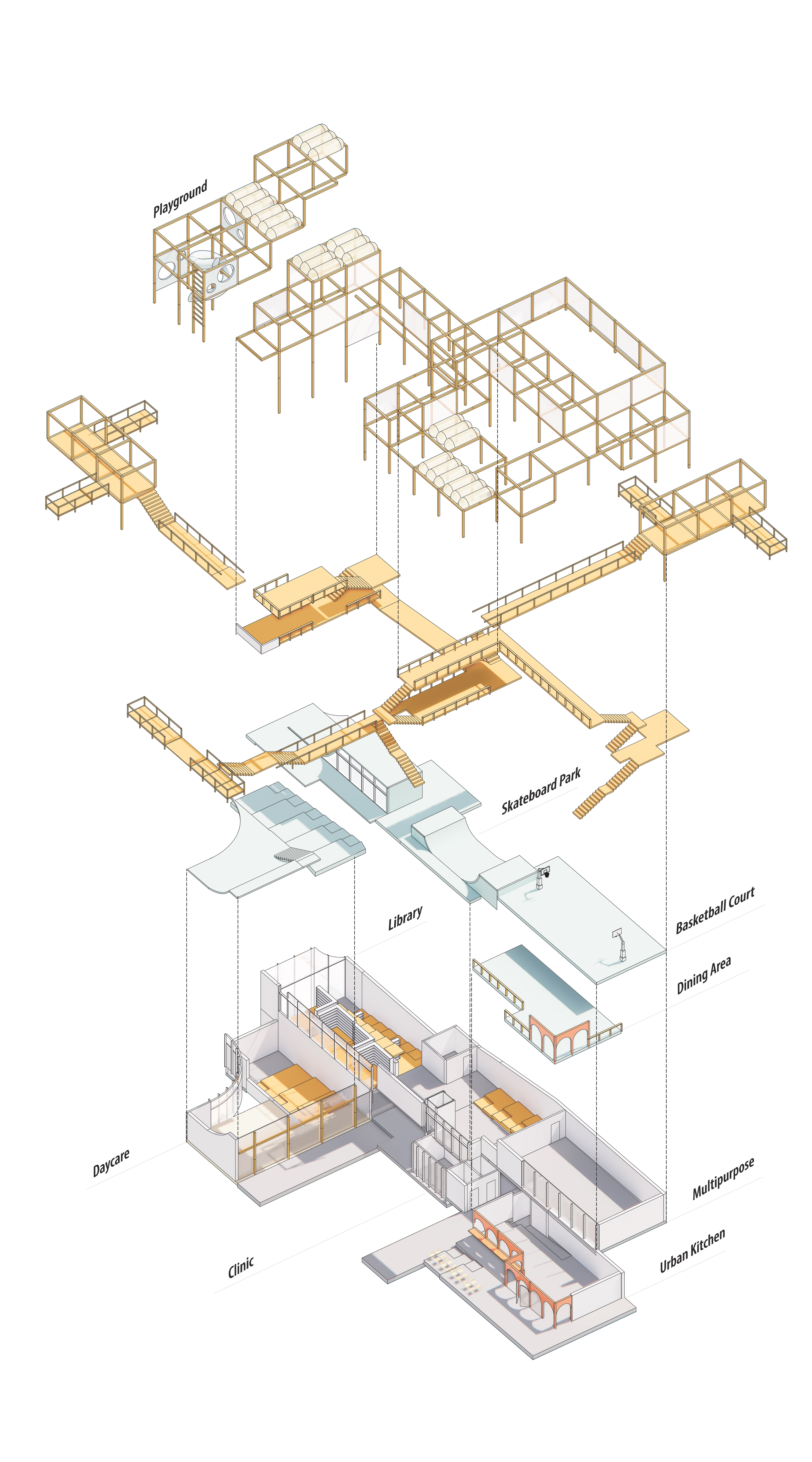


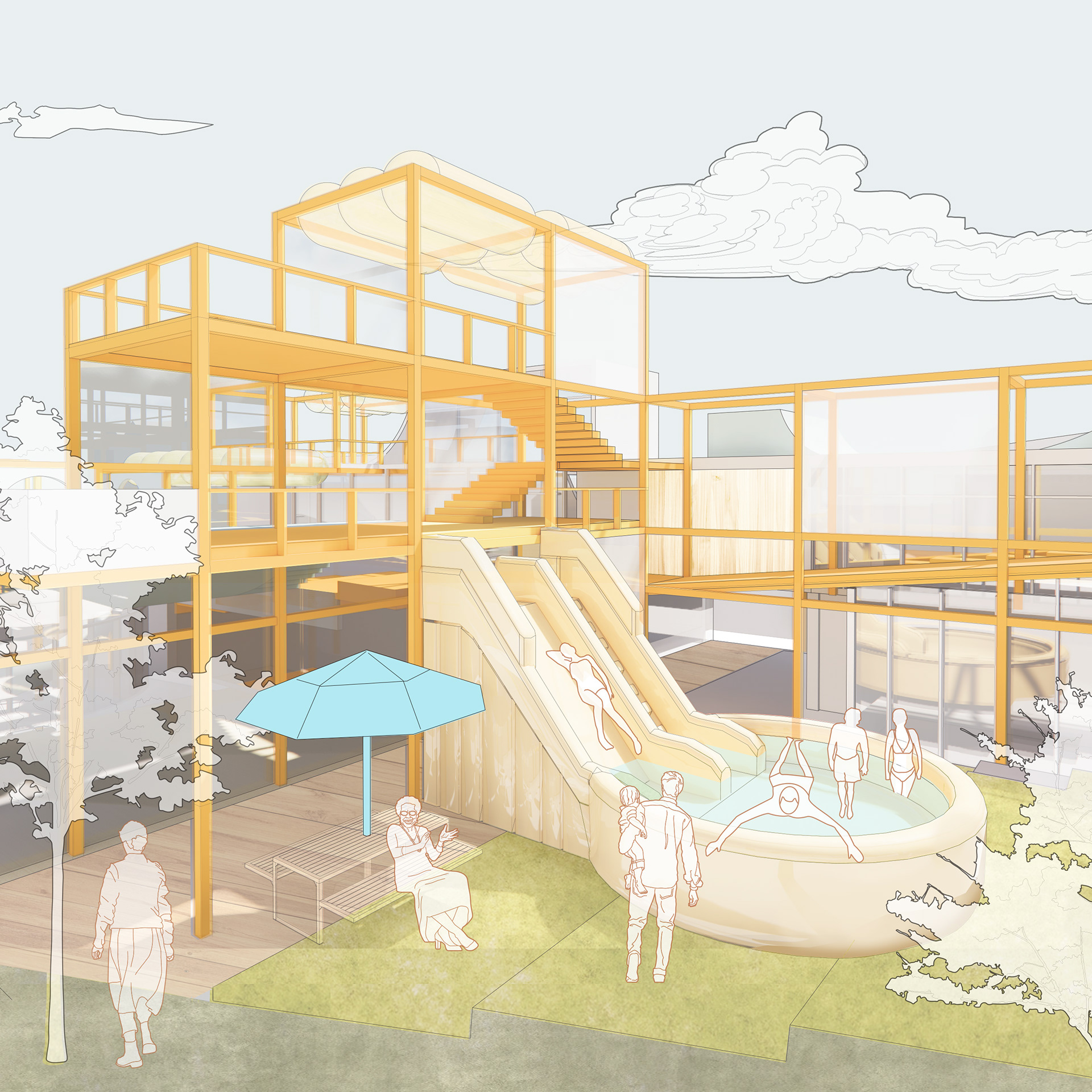
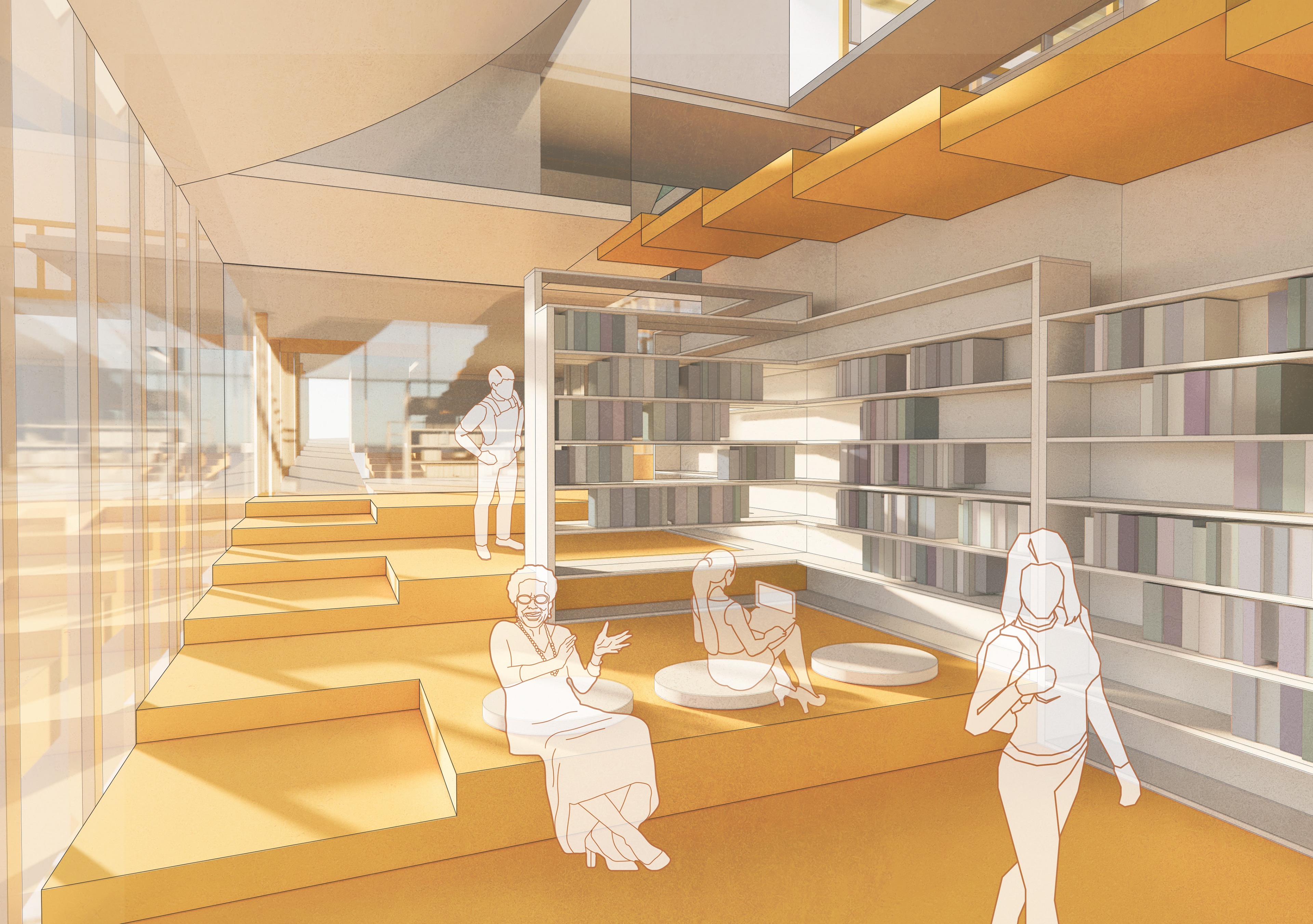


THE HERR'S ISLAND: CO-LIVING AFFORDABLE HOUSING
The Herr’s Island site provides affordable housing for Pittsburgh residents who are facing gentrification and rising housing costs. It is a co-op neighborhood where the housing is collectively owned and managed. The neighborhood is composed of housing clusters with modular units connected by communal spaces. The clusters sit on top of the slope of the river bank, creating a terraced landscape In order to help residents sustain themselves and alleviate food security concerns, the terraced platforms are turned into community gardens and used for cultivating crops. The neighborhood becomes an experimental ground and educational center for organic farming practices and connects to the Hill District community center by providing produce for the urban kitchen. The abandoned railroad bridge on Herr’s Island thus transformed into a pedestrian bridge that connects the neighborhood to the Strip District on the other side of the Allegheny River and further serves as a farmer’s market for local Pittsburgh farmers to gather and engage.
